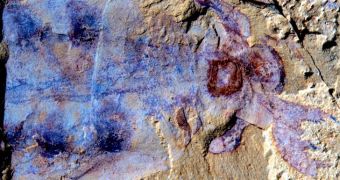Not too long ago, researchers carrying out excavations in China came across the remains of a creature said to be one of the world's first predators. Among these remains was a brain that researchers say was almost perfectly preserved.
Paleontologist Nicholas Strausfeld with the University of Arizona in the US and fellow researchers explain that the brain was left behind by a creature belonging to a previously undocumented species, now called Lyrarapax unguispinus.
The organ is estimated to be around 520 million years old, and specialists who have taken the time to examine it say that, despite the fact that it belonged to a predator, its makeup is by no means what some would call complex, Phys Org informs.
In a paper documenting this find, Nicholas Strausfeld and colleagues explain that the Lyrarapax unguispinus fossilized brain recently unearthed in China was actually way simpler than that of animals the shrimp-like arthropod preyed on.
“It turns out the top predator of the Cambrian had a brain that was much less complex than that of some of its possible prey and that looked surprisingly similar to a modern group of rather modest worm-like animals,” says Nicholas Strausfeld.
The University of Arizona paleontologist and fellow researchers suspect that the animals that Lyrarapax unguispinus used to hunt and feed on ended up sporting better brains that this predator precisely because they were almost always in danger.
“With the evolution of highly efficient predators, the pressure was on other animals to be able to detect and recognize potential danger and rapidly coordinate escape movements. These requirements may have driven the evolution of more complex brain circuitry,” argues Nicholas Strausfeld.
Based on information obtained while studying its anatomy, the paleontologists behind this research project maintain that Lyrarapax unguispinus might have been related to another branch of animals whose descendants, velvet worms, still inhabit the Earth.
These velvet worms that Nicholas Strausfeld and his colleagues suspect are somehow related to the long-gone Lyrarapax unguispinus are a fairly common sight in the Southern Hemisphere, where they live in the underground and in leaf litter.
Velvet worms are predatory creatures. Thus, they are equipped with a set of claws which they use to kill beetles and other insects that they later feed on. Despite the fact that they usually only grow to measure a few inches in length, they can be quite vicious.
The anatomical similarities between Lyrarapax unguispinus and modern day velvet worms include a rather simple brain located towards the front of the mouth, collections of nerves found in front of the optic nerve and at the base of their antennae, and claw-like appendages sticking out of their head.

 14 DAY TRIAL //
14 DAY TRIAL //